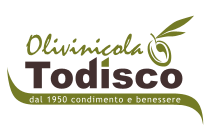The confetti, the emblem of the celebrations during the Carnival period, were and are thrown in the air or on people to animate the parades of allegorical floats.
The History of Confetti
The history of confetti has ancient roots, these have been over the centuries, the natural substitute for throwing confetti in some events; Among other things, in some languages, including English, French and Spanish, the word "confetti" refers to confetti. This small linguistic confusion began in the fourteenth century when the confetti themselves were also called confetti "cuopronsi sugar confetti for confetti", because they used the seeds of the coriander plant instead of almonds in small sweets covered with sugar.
Later, for the animation of weddings, carnivals or New Year's events, colored paper "balls" were used as substitutes for sugared almonds. Only in 1875 were paper circles adopted, thanks to the creativity of the engineer Enrico Mangili of Crescenzago (Mi), who began to market paper circles resulting from sericulture or the breeding of silkworms as confetti. In contrast to the paternity of the invention of confetti was the engineer Ettore Fenderl who asserted that to celebrate the Carnival of 1876 in Trieste he cut out triangles of colored paper, throwing them during the celebrations from his home in Piazza della Borsa. As evidence of this, there is an interview with him in 1957 on the radio on the RAI channel.
The Confetti in Putignano
The first confetti manufacturer on Putignano was Giuseppe called Peppin Recchtidd with his small factory in a low part of the ancient village near the fountain in the square of the Church of Santa Maria La Greca. He produced colored confetti which he then resold, packed in paper bags, on the stalls he set up during the fashion shows. We are in the period from the late 1960s to the early 1990s. His production, among the few in southern Italy, also served extra-regional markets.
The last of the producers
From the years following 1990 the production and the mechanical machines themselves passed into the hands of Vincenzo Lombardi, today the last manufacturer of confetti. In his Juso (low) in via Bruni, he continues to fill bags of "Gioia Carnascialesca" which, children and not, throw allegorical floats during the parades and why not during any event for which it is necessary to party. A room of 20 square meters or so, covered with colored newspapers and photos of procacious women to envy the latest Pirelli calendar, which hides in the back, a machine with alternating movements ready to gobble up pages and pages of magazines, flyers, stories of love, news, special offers and promotions to then return, once digested, the small discs.
Vincenzo called Cenzino, born in 1948, in his youth worked in the footwear sector in one of the most important companies in Putignano. Following the handicraft crisis, this company closed its doors and Vincenzo started his own cobbler business. As time went by, requests for repairs dwindled and he was forced to compensate for that loss by reinventing himself as a confetti maker. He bought the machine from Recchtidd that he still uses today and began production, becoming a point of reference also for the neighboring Carnivals, namely Rutigliano, Monopoli, Massafra.









 This website project born from the idea of Gianni Musaio is enclosed in a team spirit and is the result of the collaboration of people, ordinary citizens, who care about the historical, cultural, artistic, geographical, food and wine heritage of the historic center of Putignano, a town in to live.
This website project born from the idea of Gianni Musaio is enclosed in a team spirit and is the result of the collaboration of people, ordinary citizens, who care about the historical, cultural, artistic, geographical, food and wine heritage of the historic center of Putignano, a town in to live.








